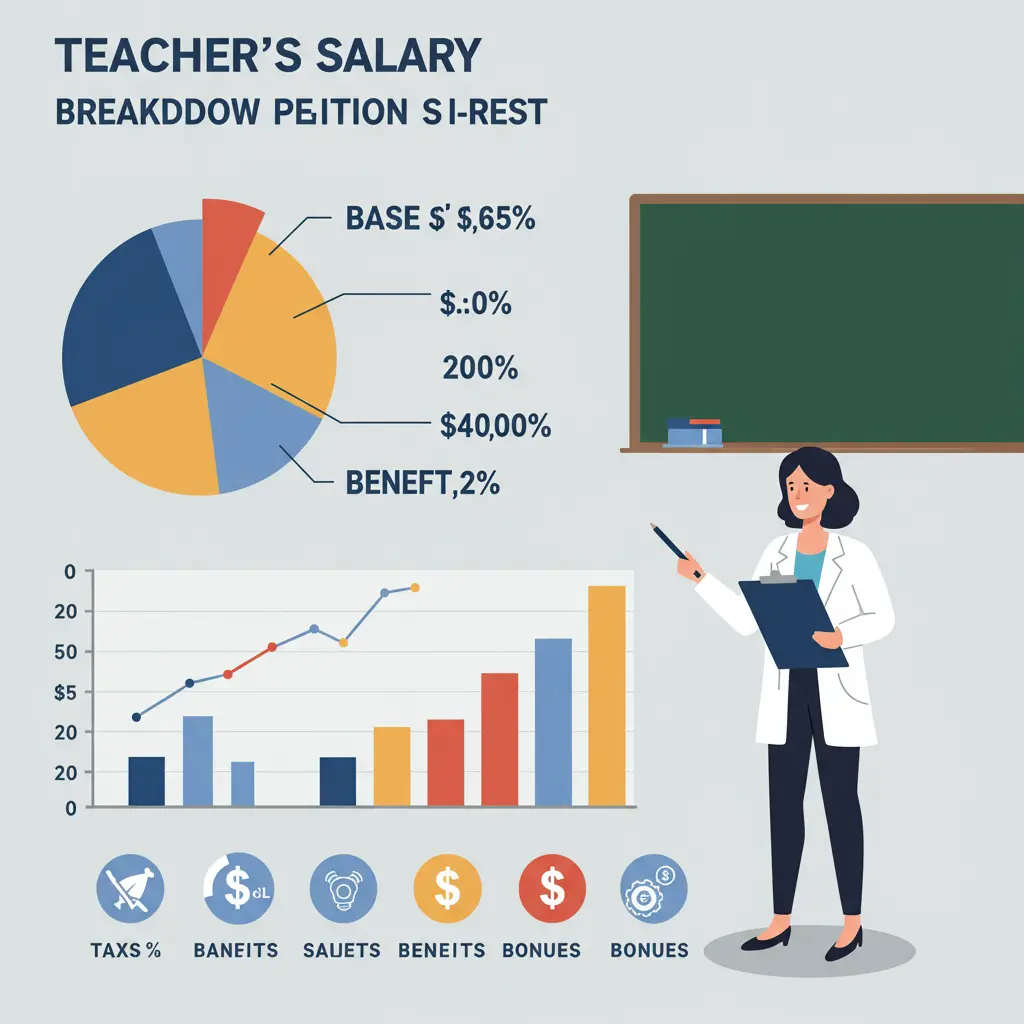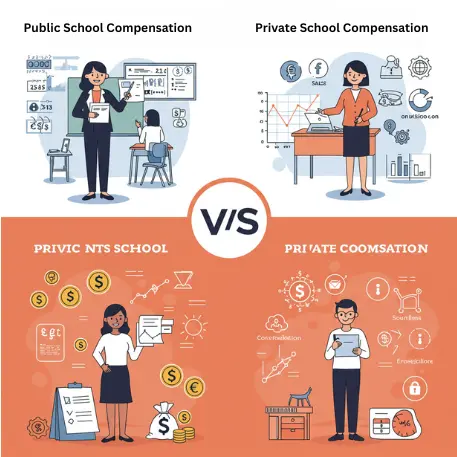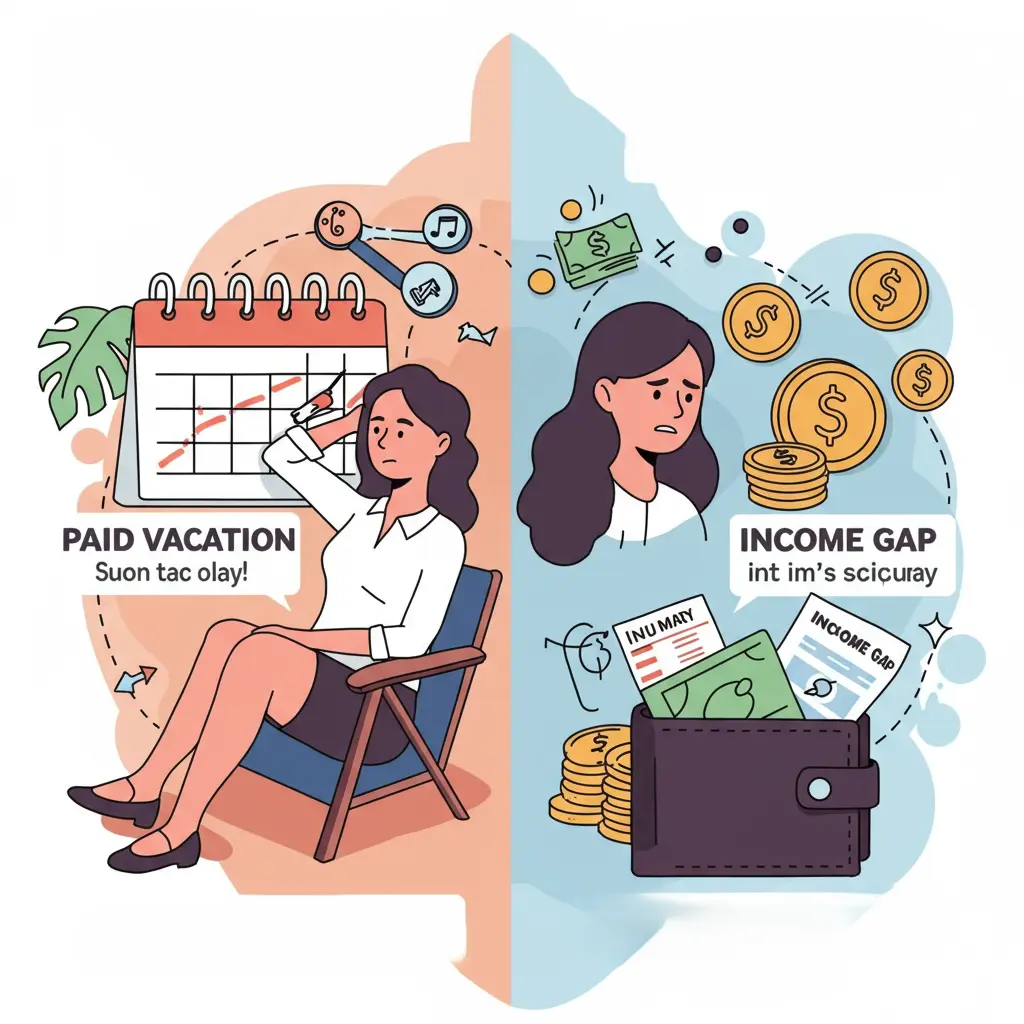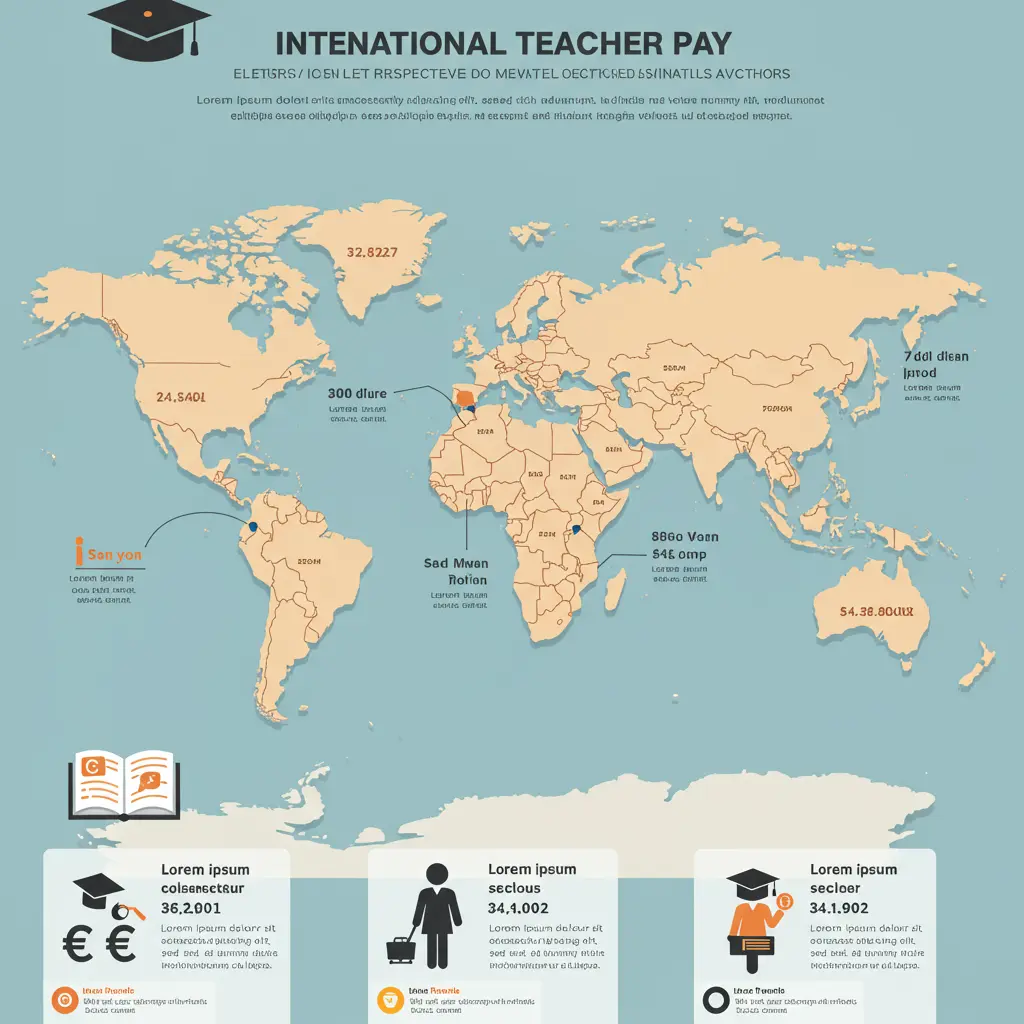Teachers play a vital role in shaping the future, yet their earnings often don’t reflect the importance of their work.

The hourly wage of a teacher can vary depending on factors like country, state, experience, education level and type of institution. From public schools to private academies, the pay scale changes significantly. In this article, we’ll explore how much teachers typically earn per hour, what influences their wages and how their compensation compares to other professions.
Why Hourly Pay Matters in Understanding Educator Compensation
Hourly pay offers a clearer picture of a teacher’s true earnings, especially when considering the long hours spent outside the classroom on lesson planning, grading and training. Unlike fixed salaries, hourly rates reveal how much educators are compensated for each hour of work.
This helps in comparing their pay to other professions and understanding whether their income fairly reflects their responsibilities, workload and contribution to society. It also highlights gaps in educational funding and teacher support.
Understanding the Basics
The Traditional Annual Salary Model
The traditional annual salary model pays teachers a fixed amount over the course of a year, regardless of the actual hours worked. While this model provides financial stability, it often fails to reflect the true workload teachers carry, especially during evenings, weekends and holidays spent on unpaid duties.
It also makes it harder to compare teacher compensation with hourly based jobs. Understanding this model is essential to evaluate if educators are being fairly paid for their time and effort.
The Hidden Complexity of “Per Hour” Calculation
Calculating a teacher’s hourly wage is not as simple as dividing their salary by standard working hours. Teachers often work far beyond classroom time preparing lessons, grading, attending meetings and participating in school events.
These extra, often unpaid hours make it difficult to pinpoint an accurate per hour rate. This hidden complexity can lead to misunderstandings about teacher compensation, undervaluing the true extent of their work and commitment within the education system.
How Much Does a Teacher Earn an Hour
Breaking Down the Numbers

Average Salaries by Educational Level
Teacher salaries often vary depending on the educational level they teach. Generally, elementary school teachers earn less than high school teachers, while college or university professors tend to have higher average salaries.
For example primary educators may earn a modest income, whereas high school teachers typically earn more due to specialized subjects. Professors with advanced degrees and research responsibilities usually top the pay scale. Understanding these differences helps in assessing fair compensation across the education system.
Differences by Subject Taught
Teacher salaries can also vary based on the subject they teach. Subjects in high demand such as mathematics, science and computer studies often offer higher pay due to a shortage of qualified educators. In contrast, subjects like art, history or physical education may offer lower compensation.
These differences reflect market demand, required qualifications and funding priorities. Recognizing subject based pay gaps is important for understanding teacher compensation and encouraging talent in essential but underpaid subject areas.
Regional Disparities in Teacher Pay
U.S. State-by-State Comparisons
Teacher pay in the U.S. varies significantly from state to state due to differences in cost of living, education budgets and local policies. For example states like New York and California offer higher average salaries, while states such as Mississippi or Oklahoma tend to pay less.
However, higher pay doesn’t always mean better value if living costs are also high. Comparing teacher salaries across states helps highlight disparities and encourages efforts toward fairer nationwide compensation.
Urban vs. Rural School District Variance
Teacher salaries often differ between urban and rural school districts. Urban areas may offer higher pay due to larger budgets and higher living costs but they often come with greater challenges such as overcrowded classrooms or limited resources.
Rural districts may pay less but sometimes offer closer communities and lower living expenses. This urban rural pay gap affects teacher recruitment and retention, influencing the quality of education students receive based on their geographic location.
Public vs. Private School Compensation

Pay Structures in Public Education
Public education pay structures are typically based on standardized salary schedules which consider factors like years of experience, education level and certifications. Most school districts follow a step and lane system teachers move up in steps with each year of service and across lanes by earning additional qualifications.
While this model ensures fairness and predictability, it may limit flexibility or rewards for exceptional performance. Understanding these structures is essential for evaluating how public educators are compensated and motivated.
The Often Underrated Private Sector
Private school teachers often earn less than their public school counterparts but the trade offs can include smaller class sizes, more autonomy and unique teaching environments. While compensation may seem lower on paper, some private institutions offer non monetary benefits like housing, tuition discounts or flexible schedules.
Despite these perks, the private sector is often underrated in compensation discussions. Evaluating private school pay requires looking beyond salary alone to understand the full value of these teaching roles.
The Role of Experience and Credentials
How Tenure Influences Hourly Earnings
Tenure can significantly impact a teacher’s hourly earnings by providing job security and often leading to salary increases over time. As teachers gain experience and remain longer at a school, they typically move up salary scales which boosts their effective hourly pay.
Tenure also protects educators from sudden job loss, encouraging long term career commitment. However, it may slow salary growth for some, especially if raises are tied more to years served than performance.
Advanced Degrees and Specialized Certifications
Teachers with advanced degrees, such as master’s or doctoral qualifications and specialized certifications often earn higher salaries than those with only a bachelor’s degree. These credentials demonstrate deeper expertise and commitment to the profession making educators eligible for salary increases or bonuses in many school districts.
Specialized certifications in high demand areas like special education or STEM subjects can further boost pay, reflecting the value of advanced knowledge and skills in improving student outcomes and school performance.
Work Beyond the Bell
Unpaid Hours: Grading, Planning, and Meetings
Teachers often work many unpaid hours outside the classroom, including grading assignments, lesson planning and attending meetings. These tasks are essential to effective teaching but usually are not accounted for in their official paid hours.
This extra workload means that the actual hourly wage of teachers is often lower than it appears as they invest significant time beyond their scheduled teaching hours. Recognizing unpaid hours is crucial for understanding the true demands of the profession.
Extracurricular Duties and Additional Responsibilities
Many teachers take on extracurricular duties like coaching sports, leading clubs or organizing events which often go beyond their paid teaching hours. These additional responsibilities contribute significantly to student development and school culture but usually are not compensated separately. Balancing these roles with classroom teaching increases their workload and affects their effective hourly earnings.
Acknowledging these duties is important to fully appreciate the dedication teachers show and the broader scope of their professional commitments.
Summer Break: Paid Vacation or Income Gap

Myths and Realities of “Time Off”
Many people believe teachers have extensive free time due to holidays and summer breaks but the reality is often different. While teachers do get scheduled breaks much of this time is used for lesson planning, professional development or catching up on grading.
Additionally, unpaid work frequently fills these “off” periods. Understanding this balance helps debunk the myth that teachers have excessive time off and highlights their ongoing commitment throughout the year.
Income Supplementing Strategies
Many teachers use income supplementing strategies to boost their earnings beyond their base salary. These can include tutoring, summer school teaching, coaching or selling educational materials. Some also take on part time jobs or freelance work related to education. Such strategies help offset the challenges of relatively low pay and unpaid extra hours.
While these additional efforts increase income, they also add to teachers’ overall workload, highlighting the need for fairer base compensation.
Union Influence and Collective Bargaining
How Unions Affect Pay Scales
Teacher unions play a significant role in shaping pay scales by negotiating better salaries, benefits and working conditions on behalf of educators. Through collective bargaining, unions can secure regular raises, protections against unfair dismissal and improved job security. These efforts often lead to higher average pay and more standardized compensation across districts.
However, union influence varies by region and some critics argue it can limit flexibility in rewarding individual performance. Overall, unions remain a powerful force in teacher compensation.
Localized Negotiation Power
Teacher pay is often influenced by localized negotiation power, where individual school districts or regions negotiate salaries based on local budgets, cost of living and political climate. This means compensation can vary widely even within the same state or country.
Districts with stronger negotiation leverage or more resources can offer better pay and benefits. Understanding this localized power helps explain disparities in teacher earnings and highlights the importance of community support for education funding.
Comparing Teaching to Other Professions
Pay Per Hour Against Similar-Education Roles
When comparing pay per hour, teachers often earn less than professionals in similar education related roles, such as corporate trainers, education consultants or specialized tutors. These roles may offer higher hourly wages due to different funding sources or less unpaid work. The discrepancy highlights the challenges teachers face in being fairly compensated relative to their education, skills and workload. Understanding these comparisons can drive discussions on improving teacher pay to better reflect their professional value.
The Wage Respect Disconnect
Despite the critical role teachers play in society, there is often a disconnect between the respect they receive and their actual wages. Many educators are highly valued by communities yet struggle with relatively low pay that doesn’t reflect their skills, dedication or impact.
This gap can lead to low morale, difficulty attracting new talent and challenges in retaining experienced teachers. Addressing this disconnect is vital to ensure fair compensation and sustained respect for the profession.
International Perspectives

Teacher Pay in OECD Countries
OECD countries show significant variation in teacher salaries, often influenced by economic strength and education policy. Generally, teachers in countries like Germany, Switzerland and Luxembourg enjoy high salaries, reflecting the value placed on education. In contrast, teachers in countries like Slovakia or Hungary earn considerably less.
Salary levels also differ by education level taught and years of experience. While some nations offer competitive wages and benefits others face challenges in attracting talent due to relatively low teacher pay.
The Global Valuation of Educators
Across the world, the value placed on educators varies greatly, shaped by cultural, social, and economic factors. In countries like Finland, South Korea and Singapore, teachers are held in high regard both socially and professionally, often enjoying strong support and respect.
However, in many regions, educators face undervaluation, low pay and limited career growth, despite their critical role in shaping future generations. This disparity highlights the need for a global shift in recognizing teachers’ contributions.
New Trends in Compensation
Charter Schools and Alternative Models
Schools charter and alternative education models offer flexible approaches to traditional public schooling. Operated independently, charter schools often have greater freedom in curriculum design and teaching methods, aiming to boost student performance and innovation.
Alternative models such as Montessori or Waldorf, focus on holistic development and personalized learning. While some see these models as solutions to public school limitations, critics argue they can divert resources and create inequality within the broader education system.
Performance Based Incentives
The goal of performance based incentives is to compensate teachers according to their professional development, classroom efficacy and student results. Bonuses, promotions or pay raises linked to quantifiable performance metrics are a few examples of these incentives.
Critics counter that, particularly in underfunded institutions, it can promote “teaching to the test” and lead to stress or unfair comparisons. To guarantee equity and long term effects, a balanced strategy is necessary.
The Real Cost of Passion
Emotional Labor and Professional Burnout
Teachers often face emotional labor as they manage student needs, behavioral issues and parental expectations while maintaining a positive classroom environment. This constant emotional effort, combined with heavy workloads and limited support, can lead to professional burnout. Addressing mental health, providing support systems and promoting work life balance are crucial to sustaining a healthy teaching workforce.
Why Many Stay Despite Financial Challenges
Despite low salaries and limited financial rewards, many teachers remain in the profession due to a deep sense of purpose and passion for education. They find fulfillment in shaping young minds, building community connections and making a lasting impact on students’ lives.
Emotional rewards, job stability and a commitment to societal growth often outweigh monetary concerns. For many, teaching is more than a job . it’s a calling driven by dedication and personal values.
Conclusion:
Understanding teacher pay requires more than just numbers. it demands a deeper look into the structures, expectations and values tied to the profession. From regional disparities to the gap between public and private compensation, every factor shapes how teachers are treated and rewarded.
Experience, qualifications, unpaid duties and union efforts further complicate the landscape. When compared globally and against other careers, the financial gap becomes clearer. Ultimately, while passion drives many educators, fair compensation remains essential to sustain and uplift the profession.
Q: What does “Understanding the Basics” mean in the context of teacher pay?
A: It refers to grasping how teacher salaries are structured, funded and determined across different education systems.
Q: Is “Summer Break” truly a paid vacation for teachers?
A: Not always. Many teachers aren’t paid for summer and may seek other income to fill the financial gap.
Q: How do “Unions and Collective Bargaining” affect teacher pay?
A: Strong unions can negotiate better wages, benefits, and working conditions, influencing teacher satisfaction and retention.
Q: What’s the difference in pay between public and private schools?
A: Public school teachers usually receive better pay, benefits and job security compared to many private school educators.